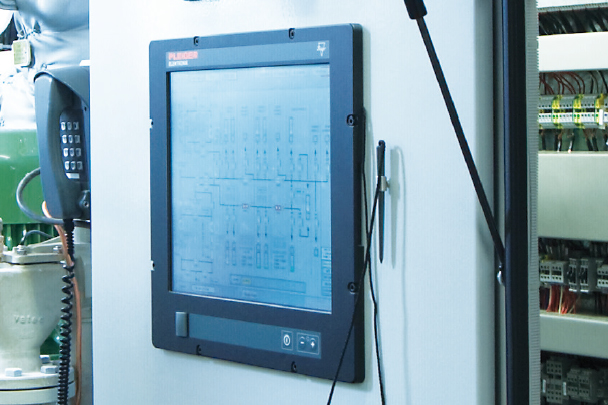
Pleiger PPC is a PC-based control system for operation, monitoring and automation in ship operations
Several operator terminals are connected via Ethernet. According to application, one or more of these operator terminals can take over a PLC function. The connection of the process I/O and the connection to external systems are implemented using up to four independent Modbus RTU interfaces, or Modbus TCP.
Hardware
Highlights:
- Compact design and construction – hat rail fitting for switching cabinet and in-desk installation
- Flash card memory – data memory resistant to vibrations
- Flexible standard interfaces – simple data accessibility to the peripherals
- Flexible interfaces to external systems data exchange over standard or customer-specific adapted data exchange protocols, e.g., to the loading computer or alarm system
- Identical hardware for all stations – reduced spare parts storage and rapid aid on board
- Monitors for various installation methods (console or desktop mounting), dimmable, touchscreen operation
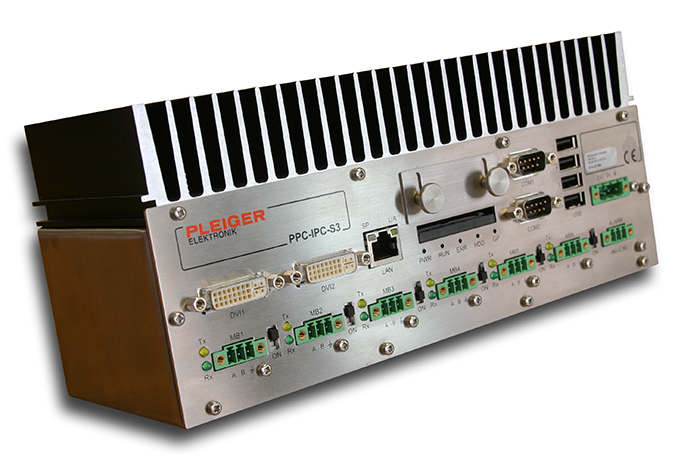
Functions
> Valve/Pump Automation
Secure control, display and monitoring of the operational states of valves, pumps and other units.
> Tank Measuring System
Collection and calculation of filling levels, volume calculation with trim correction, adjustable alarm limits, clear displays with all detailed information, bar graphs for the intuitive recording of the overall condition.
> Bilge Automation
Automatic emptying of bilge wells, valve and pump control dependent on filling levels, avoidance of additional alarms, calmer ship operation through automatic system function.
> Source/Target Control
Partial automation of all pump processes in the ballast system, ease of operation – also through non-specialist personnel, assured monitoring and alarm of operational states:
The operation is reduced to the simple selection of one source (e.g. sea), one target (e.g. tank) and the input acknowledgment. All of the actions associated with the pumping procedure, such as opening the valves, starting the pumps, monitoring the limit values, are implemented automatically.
> Heeling Automation
Automatic heeling equilibrium in the loading operation, with operating range of +/–10°, input-capable alarm limits, monitoring of the fuel tank capacities, valves, pumps, variable inclination setpoint for the optimization of the loading operation.
> Stability Test System
Assured verification of the ship’s stability – The In-Service Inclining Test System ISITS enables the rapid assessment of the ship’s stability. In this case, the heeling of the ship is measured as a reaction to a defined heeling moment with the aid of two high-precision inclinometers. The moment is generated through the transfer pumping of ballast water between the heeling tanks. In addition, the displacement of the ship is determined by a precise draught measurement. From these values, the GM stability measure is calculated. Graphic outputs of the measured values facilitate the checking of the correct progress of the measurement.
For every measurement, a record can be printed or written into a PDF file.
> Ballast Water Exchange
Automated ballast water exchange for the release of operating personnel from burdensome duties and assured compliance with specifications; following the source/target control operating philosophy, the tanks are preselected and the operation released. The emptying and filling of the side tanks and the continuous replacement in the bottom tanks is implemented automatically, with signaling of the respective status.
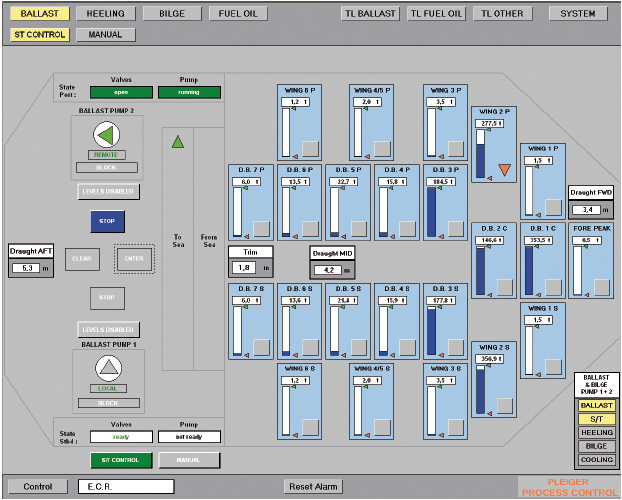
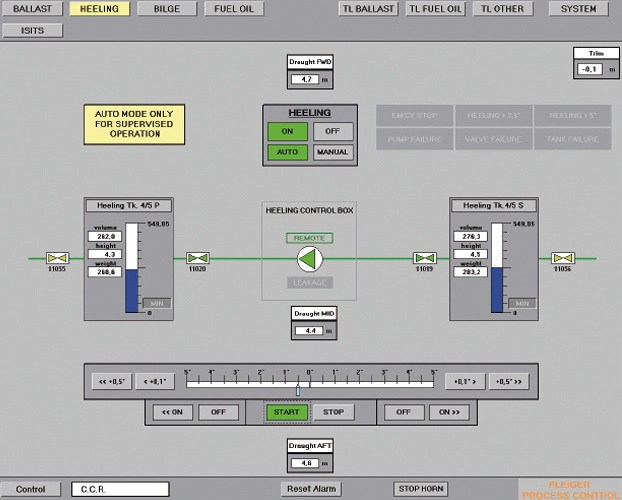
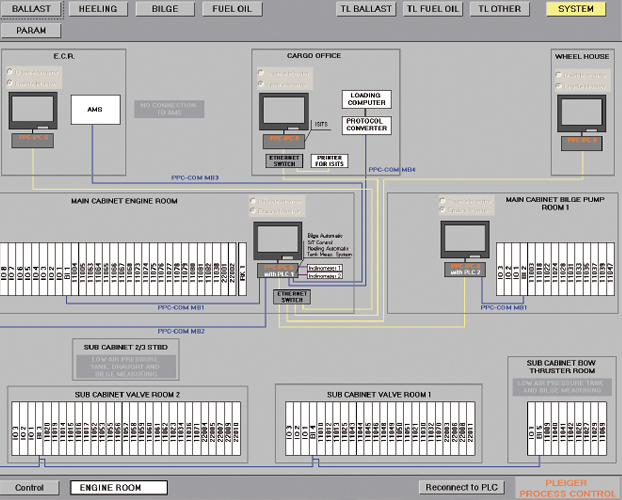
Overall System
Highlights:
- Clear displays, intuitive operation
- Understandable and detailed system diagnostics – simple troubleshooting; the system diagnostics, as well as aid functions, such as self-tests, offer clear indications of problem points
- Clear system structure – clear interconnections
- Coordinated system components – continuously compatible interfaces
- Continuity of all systems – from the actuator/sensor to the control system
- Simple system maintenance/diagnostics – detailed status and fault indications simplify operational start-up, error location and maintenance
- Clear interfaces to external systems – standard protocols and detailed documentation guarantee secure function
- High performance functions – from the individual valve control to the overall automation
